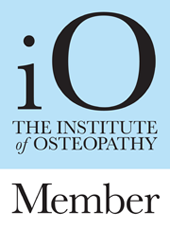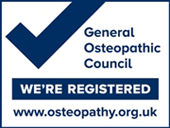Osteopathy, pelvic pain & back pain in pregnancy
Introduction
Are you struggling with pregnancy-related back pain or pelvic pain? Many women experience mechanical pregnancy pains at some stage during the course of their pregnancy. This is sometimes called pregnancy-related pelvic girdle pain (PPGP) or symphysis pubis dysfunction (SPD).
Woburn Osteopaths have lots of experience in the treatment of pregnancy-related back pain, PPGP and SPD and we offer methodical, effective and quick solutions to help.
Symptoms of PPGP / SPD
PPGP / SPD involve a collection of uncomfortable symptoms caused by a misalignment or stiffness of the pelvic joints at either the back or front of the pelvis. They are not harmful to the baby, but they can cause severe pain around the pelvic area and make it difficult to move about. Symptoms vary from one person to another.
Common symptoms include:
• Pain over the pubic bone, at the front and in the centre
• Pain across one or both sides of the lower back
• Pain in the area between the vagina and anus (the perineum)
Pain can also radiate into the thighs and some women feel or hear a clicking / grinding in the pelvic area. The pain can be most noticeable whilst walking, climbing stairs, standing on one leg (e.g. whilst getting dressed) and rotating in bed. It may also be difficult to move the legs apart (e.g. getting out of a car).
Who gets PPGP or SPD?
1 in 5 women are affected by PPGP or SPD to some degree during their pregnancy. Factors that may contribute to PPGP and SPD are as follows:
• Low back / pelvic pain history
• History of injury to the pelvis (e.g. fall / road traffic accident)
• History of PPGP in a previous pregnancy
• Physical employment / hobbies
Hormonal changes during pregnancy cause an increase in the level of a hormone called relaxin, which contributes to the softening of ligaments that hold joints together. In pregnancy, the ligaments in the body naturally become softer and stretch to prepare for labour. This can put a strain on the low back joints and pelvis, leading to back ache and PPGP and SPD.
Diagnosis & management
Early diagnosis of PPGP / SPD can help to keep pain to a minimum and avoid long-term discomfort. Reporting pain in the pelvic area to a midwife, a GP or an obstetrician promptly is advisable. For some, these symptoms may resolve entirely. For others, the problems might not disappear completely until the baby is born, but early treatment from an experienced practitioner can significantly improve the symptoms during pregnancy.
Treatment
Osteopathy aims to relieve or ease pain, improve muscle function and improve the pelvic joint position and stability encountered with PPGP and SPD. Treatment sessions may include:
• Assessment and gentle movement of the pelvis, hip and spinal joints
• Prescription of useful exercises to strengthen the pelvic floor, stomach, back & hip muscles
• Thorough advice for day-to-day living, including positions for labour and birth and care for the baby once home
• Support equipment, such as crutches or pelvic support belts as applicable
Coping with back pain and PPGP / SPD
Both pelvic support belts and / or crutches may be recommended by a health practitioner to help ease symptoms of PPGP and SPD and aid mobility. In addition, the following advice is regularly given:
- Remain active within your pain limits and avoid activities that make the pain worse.
- Rest where possible
- Ask for help around the house from family and friends
- Wear flat and supportive footwear to distribute weight evenly
- Sit down to get dressed (e.g. avoid standing on one leg when putting on trousers)
- Keep knees together when getting in and out of the car
- Sleep in a comfortable position (e.g. on your side with a pillow between the knees)
- Try different ways of turning over in bed (e.g. turning over with the knees together and squeezing the buttocks)
- Take the stairs one at a time, or go upstairs backwards / on your bottom
- If using crutches, carry a small backpack for your belongings
- Bend the knees and keep the back straight when lifting from the floor
- Sit with a straight back and back supported by the contour of the chair
- A firm mattress is often better than a soft one
It is best to avoid:
- Bending and twisting to lift
- Crossing the legs
- Sitting on the floor
- Prolonged sitting or standing
- Heavy lifting (e.g. washing, children, shopping)
- Hoovering
- Heavy pushing (e.g. supermarket trolley)
- Carrying heavy items in one hand (e.g. big handbags)
Exercises
The following gentle exercise can help to strengthen abdominal muscles and ease back pain in pregnancy:
- Begin on all fours with knees under hips, hands shoulder-width apart and fingers facing forwards
- Lift the abdomen to keep the back straight
- Pull in the abdomen muscles and raise the back up towards the ceiling, curling the trunk and allowing the head to relax gently forward (avoid locking out the elbows)
- Hold for a few seconds and then slowly return to all fours
- Return to a straight, neutral position and avoid hollowing the back
- Work slowly and rhythmically 10 times
- Move within a completely pain-free range only
In addition, exercising in water can often help to ease back pain in pregnancy. Local leisure centres regularly offer aqua-natal classes (gentle exercise classes in water, especially for pregnant women) with qualified instructors.
It may be difficult to avoid mechanical pain during pregnancy entirely, but we will help to minimise your discomfort throughout this important time. Contact us today to arrange an appointment: 01525 290615.


